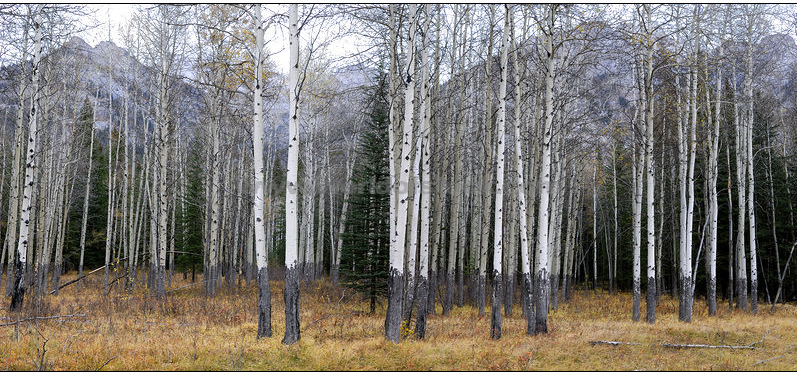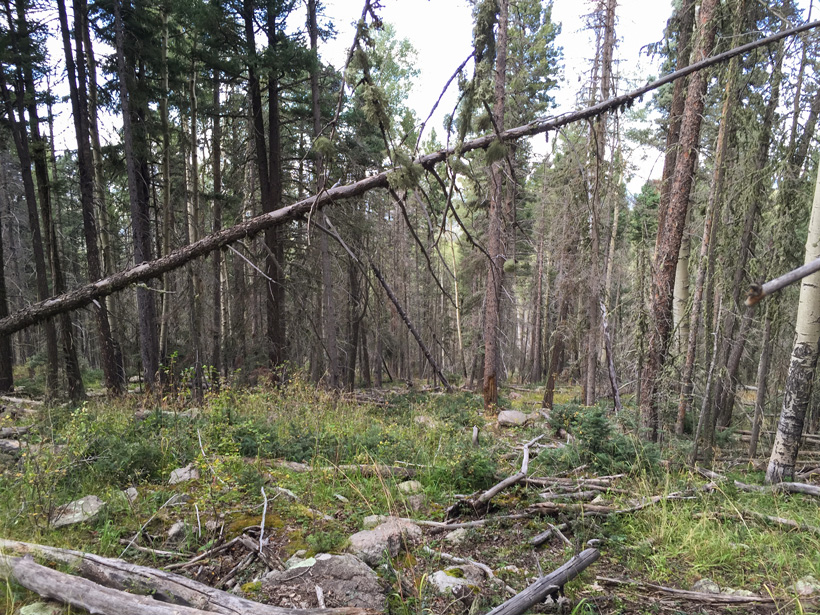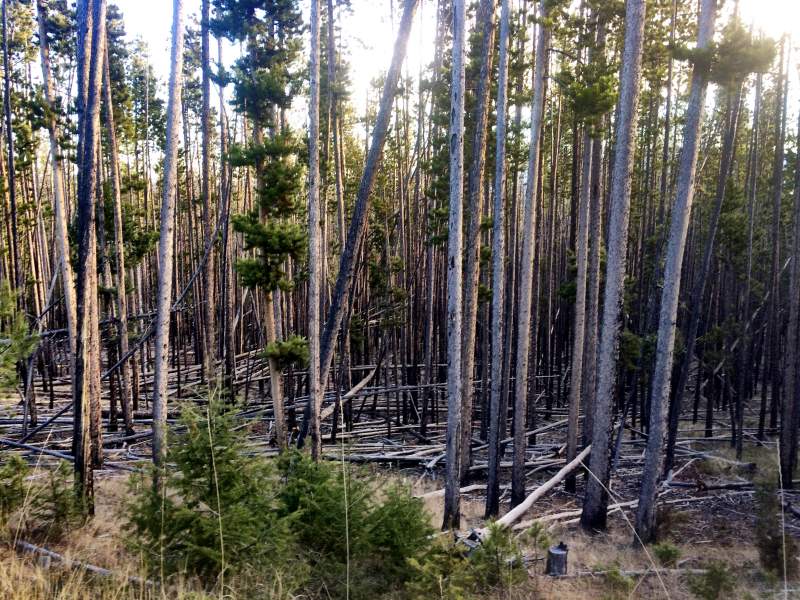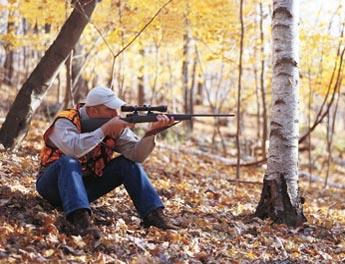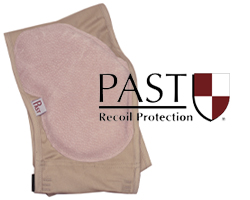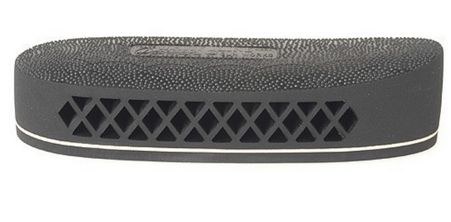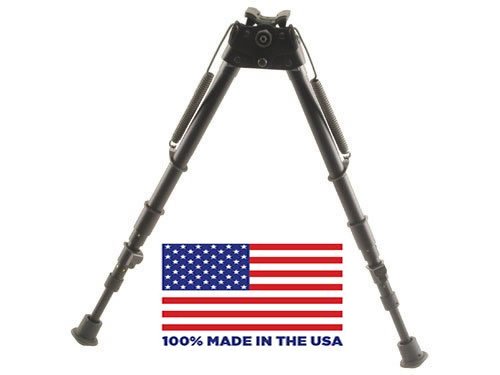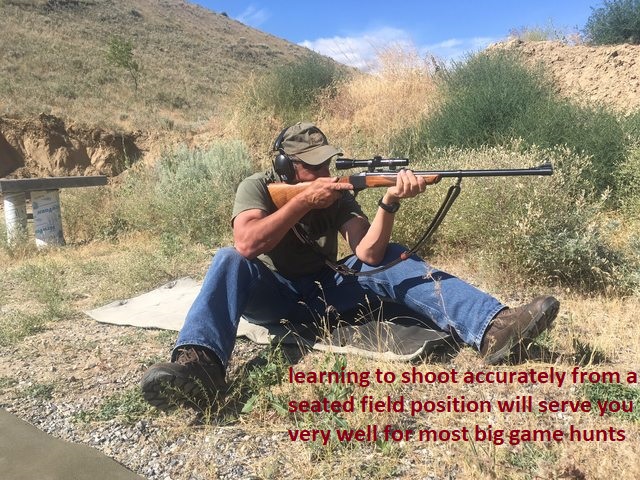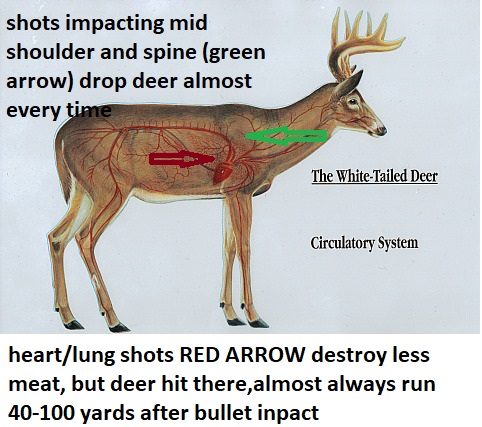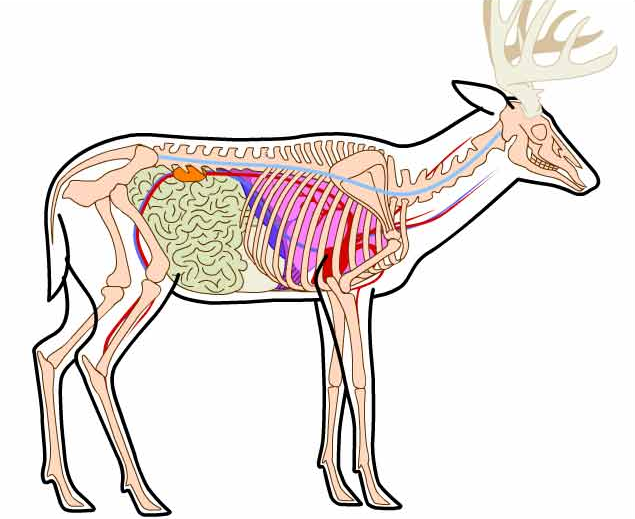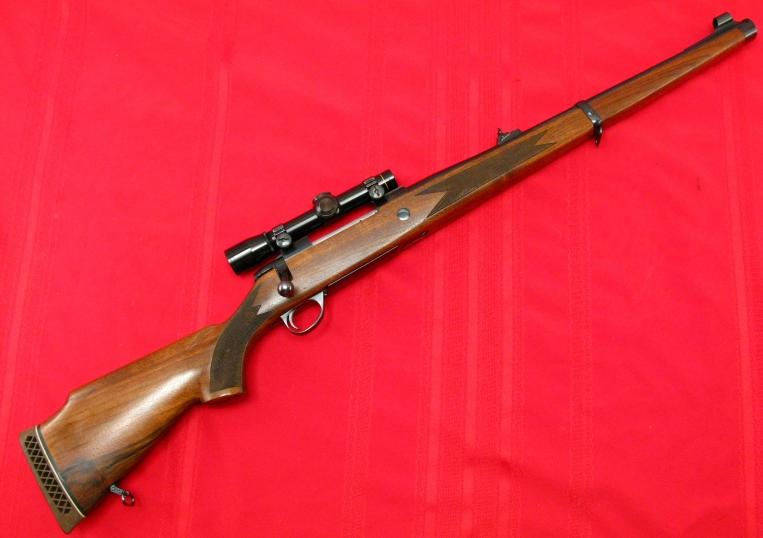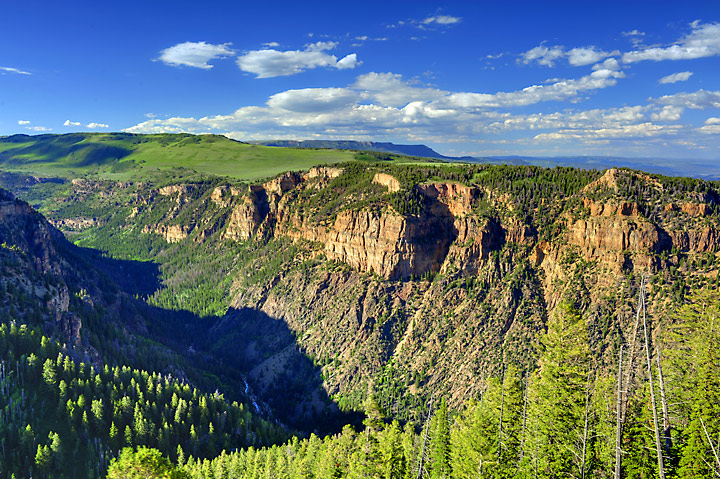"grumpy I know you"ve gone over this several times but after reading several threads,and read linked articles,
I see references from everything from a 270 win-to-a 375 H&H ,
thats a huge range, in power and I just don,t see where any of the larger more powerful cartridges are required"
REQUIRED? probably not!
damn useful and dependable HELL YES!
I think you may be confusing a cartridges potential lethality, with a rifles ability to consistently put down game efficiently,
and quickly from any reasonable range or angle,factors that
differ wildly with both range and the bullet being selected,
And the game animal being hunted, and the likely terrain and conditions its generally hunted in,
and the result is very dependent on the shooter knowing the games anatomy,
.and being able to place shots accurately.
You really can,t logically base your choice from those guys who quote the math,
from trajectory and energy tables, simply because ranges and the angles and conditions vary wildly. for extra long range your going to want a 30-330 caliber magnum, but in 50 years of hunting elk and mule deer I think Ive had only 3-4 times I needed to shoot at over 300 yards.
youll find a great many threads discussing cartridges, a 30/06 with the proper ammo, like a good 180-200 grain bullet, will kill any elk if the guys using it understands its limitations on range and the animals anatomy, and will certainly work well in over 80% of the areas and conditions your likely to see.
that does not mean its ideal, every caliber and rifle compromises in some area of range,recoil or penetration, rifle weight etc. so the person selecting the rifle will make a choice he feels makes the best compromises,
personally I want a bit more power and bullet mass and I'm willing to accept more rifle weight and recoil... most people don,t want those factors.
example
with a 300 wby or win mag
https://www.hornady.com/bullets/rifle/30-cal-308-212-gr-eld-x#!/
with a 340 wby or lapua mag
https://www.hornady.com/bullets/rifle/338-cal-.338-270-gr-eld-x#!/

Ive hunted elk for almost 50 years, Ive seen guys successfully drop elk with everything from a 257 Roberts to a 458 win mag.
one guy I hunt with uses a ruger #1 in 270, and my late hunting partner preferred a BLR in 358 win,
both guys have a long list of successful hunts.
what rifle you select is far less important than your skill using it and knowledge of the elk and the area hunted,
a decent rifle,you already probably own, in a caliber like a 30/06, with a quality 180 grain-210 grain bullet,
in a , bolt action, slide action, single shot or BLR is fully adequate in experienced hands
Id say far more hunts fail due to lack of the hunters physical conditioning, lack of proper knowledge of the area hunted,
or lack of persistence than due to the rifle used
the best combo Ive found for general use where you don,t know the ranges likely to be encountered,
is a synthetic stock 340 wby loaded with 250 grain bullets and a decent scope like this
https://www.midwayusa.com/product/3...e-scope-30mm-tube-5-20x-50mm-side-focus-matte

I doubt Id have done any , better or worse with a ruger falling block in 338 win or 35 whelen
or a BLR in 30/06
theres no disputing the fact that a properly placed shot from a 270 win , 30/06 or 308 win will be lethal, if placed correctly and if the correct bullet design has been selected, yet,
in 45 years Of elk hunting , I've noticed several distinct trends, that have effected my personal choices and confidence in the rifles I personally use.
when I started out every magazine,
I read was promoting flat trajectory magnums like the remington 7mm mag and 300 win mag , 300 wby mag, as the ideal hunting calibers,
most Of the guys I hunted with were originally either 7mm or 30 caliber magnum fans.
hit almost any game in a vital area with a reasonable caliber and mortal/ lethal damage can be done,
but that is not always an indication of how fast an animals likely to drop or how far it might travel between the time its hit and it dies,
As time progressed factors like recoil, muzzle blast,rifle length and cost of both rifle and ammo and easy of operation began to be considered ,
and watching the consistent results other people were getting,
seemed to have a good deal of weight or effect on the rifles other members of my elk hunt group bought.
over the decades most of the guys saw the advantages of the 30-45 caliber carbines,as these rifles seemed to produce very convincing results at, as the ranges we found elk at seldom exceeded 300 yards,
and rifles chambered for the 308 win, 358 win, 35 whelen , and 338 win and even the 45/70,became favorites!
we found that the rifle and caliber were far less important than the skill, endurance and experience of the guy using it!
ANYTHING FROM A 257 ROBERTS-375 h&h WILL WORK FINE IN EXPERIENCED HANDS,
that does not imply theres not some advantages in some calibers over other's,
just that there's much more to elk hunting that the cartridge you select to use!
I started my big game hunting career with a 30/06 Springfield and over the decades , I settled on the 340 wby and 375 H&H as being my ideal rifle calibers ,
but I seriously doubt any of the successful results in lethality would have changed in any major way had I simply retained the 30/06 Springfield, or bought a 35 whelen.
but I can remember several hunts where the result of being able to put down game fast and effectively made a big potential difference.
but once you develop a 100% confidence in your rifle(s) your very reluctant to change from what you've proven many times over will kill with a single shot.
my late hunting partner Ron was convinced his 358 win BLR was idea, there's at least 5 guys in our group that idolize the Remington 7600 in caliber 35 whelen.
keep in mind your whole hunts success may depend on your ability to make one well placed shot and your knowledge of elk anatomy and your field accuracy.
from my experience I would suggest you select a rifle with enough power and a flat enough trajectory that you feel comfortable making a 250-300 yard shot from field positions, as easily 95% of my shots at game, over 45 years of hunting in at least 7 states for deer and elk, were taken at under 300 yards
the two most popular rifles in the hunt club I belong too are,
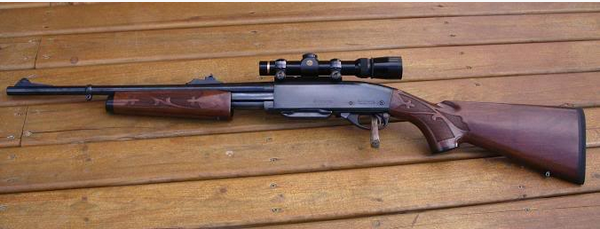

my late hunting partner considered anyone not equipped, with a browning BLR in caliber 358 win ,
while hunting elk too be hampered and working under a sever dis-advantage
I loaded for him for almost 30 years , fed 215 primer, 250 grain speer and 44 grains of IMR 4064
that carbine accounted for at least 14 elk over 35 years.
. I received a brief e-mail asking why I seem to be promoting the 450 marlin BLR
Im not promoting any caliber or action type, simply pointing out what I see rather frequently, used.

one of my close hunting partners for 3 decades carried almost nothing but a pre 1981 BLR in caliber 358 win, he was quite successful,
enough so that I purchased a post 1981 BLR, in caliber 358 win and later one in caliber 450 marlin,
both are very dependable hunting rifles, that Id carry with zero reservations,
as both consistently are fully able to shoot 1.5" 100 yard three shot groups off the bench rest.
and yes the function and triggers improve as they get a bit of wear and you become more familiar with their use.

he constantly referred to my 340 wby as a "damn CANNON"
we were both successful.
Many of the guys that are not lever action fans, buy bolt or pump actions in caliber 35 whelen, the 35 whelen adds about 200 fps to the same bullets the 358 win shoots,
( I doubt any elk or deer knows the difference)several of the guys I hunt elk with think the 7600 35 whelen, is a top choice,
I've used one and I don,t see a damn thing thats in need of improvement if you hunt the ticker timber areas.

http://www.handloads.com/loaddata/default.asp?Caliber=35 Whelen&Weight=All&type=Rifle&Source=
http://www.handloads.com/loaddata/default.asp?Caliber=358%20Winchester&Weight=All&type=rifle&Order=Powder&Source=
the Remington 7600 (30/06 and 35 whelen)
and the browning BLR (308 win and 358 win)
I do a great deal of the hand loading for members
I generally use fed 215 primers
all four calibers in both style guns with proper hand loads will usually produce consistent 3 shot groups under 1.5" at 100 yards off a good solid bench rest
powders vary , but WW748 IMR4064 and h380 and H414 are common
both the 35 calibers seem to prefer the speer 250 grain bullets
I think we all find we have favorite rifle action types , personally I like and trust single shot browning falling block rifles like the browning 78 ,in 300 wby,
and the bolt action weatherby mark V ,in 340 wby, and the 375 H&H, bolt action, for most of my hunting,
(you might feel thats excessive, I know I'm in a minority)
I could not pick or would want to even suggest what YOU might prefer,
some guys like blondes some guys prefer brunettes... find what you like best, and what you have fun with, and youll never be wrong.
I've purchased, and used a great many rifle calibers from 6 mm rem to 458 LOTT and a 58 and 62 caliber muzzle loader's
many guys seem to be adversely effected by any significant recoil and many prefer lighter weight rifles, thats fine,
I find lots of the guys I hunt with preferred pump and lever actions
personally I prefer the .338-.45 calibers, they tend to get obviously noticeable results
you can't ignore physics a larger and heavier projectile tends to hit harder,
but its a judgement call on how hard you want to hit the target or what trajectory and recoil limitations your willing to deal with
I've seen several elk killed with a 257 roberts and a couple killed with a 45/70, , most guys seem to find a 308 win, 30/06 or 270 win works well.
power is obviously not as critical as shot placement
if you can accurately use a 300 mag-375 mag the extra power has marginal advantages in a few applications but its rarely if ever going make or break a hunts success.
from what Ive seen having confidence in your choice of rifle and being very familiar with its quirks and characteristics and limitations is the key to success not the action type or caliber or case head stamp.

https://www.speer-ammo.com/bullets/rifle-bullets/hot-cor-rifle-bullets/358/358-250-hcsp-bullet
Ive had good accuracy with the 30 cals with the 165 grain
https://www.speer-ammo.com/bullets/rifle-bullets/hot-cor-rifle-bullets/308/308-165-sptz-bullet
http://garage.grumpysperformance.co...-a-good-all-around-elk-mule-deer-rifle.12948/
http://www.shootingtimes.com/ammo/ammunition_st_exforelk_200908/
keep in mind the bullet you select does all the work, and if your hunting an area where ranges tend to be longer than about 250 yards its a good idea to select a projectile with a high ballistic coefficient, (IE lower drag projectiles in the heavier weight for caliber range ,will allow longer range hits with flatter trajectory
http://www.bergerbullets.com/products/hunting-bullets/
https://www.hornady.com/bullets/rifle/#!/
PRODUCTIVE ELK HUNTING COUNTRY IN MY EXPERIENCE, HAS BEEN MOSTLY SIMILAR TO THESE PICTURES POSTED BELOW
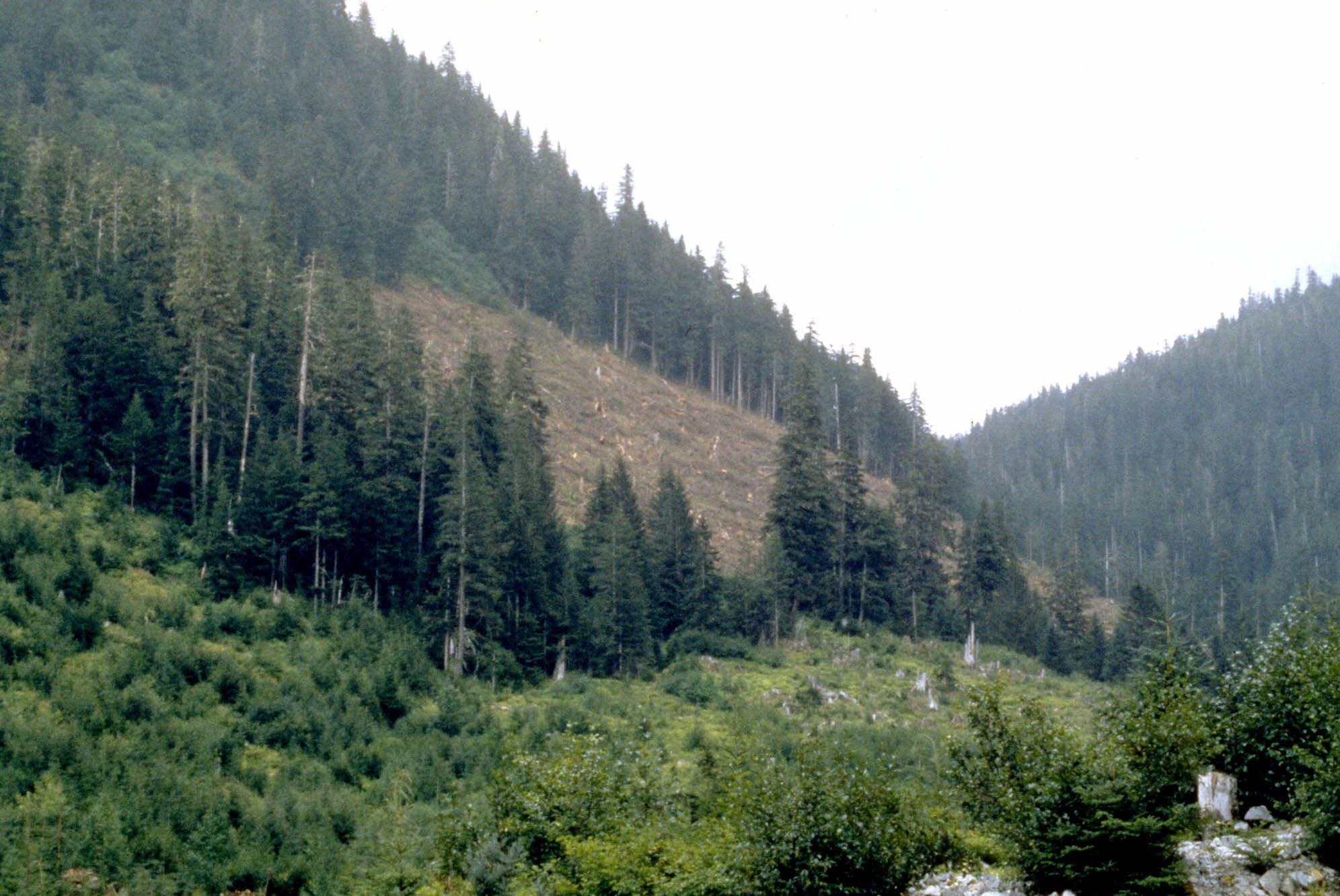
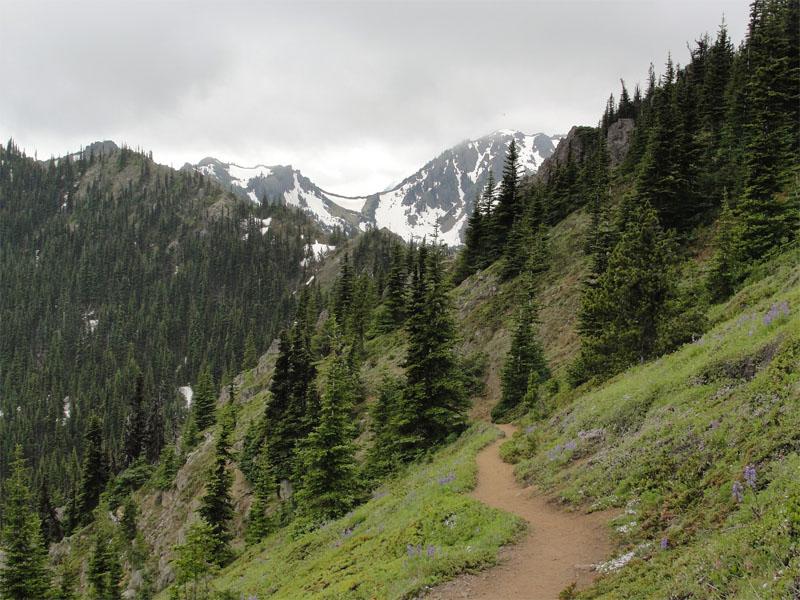
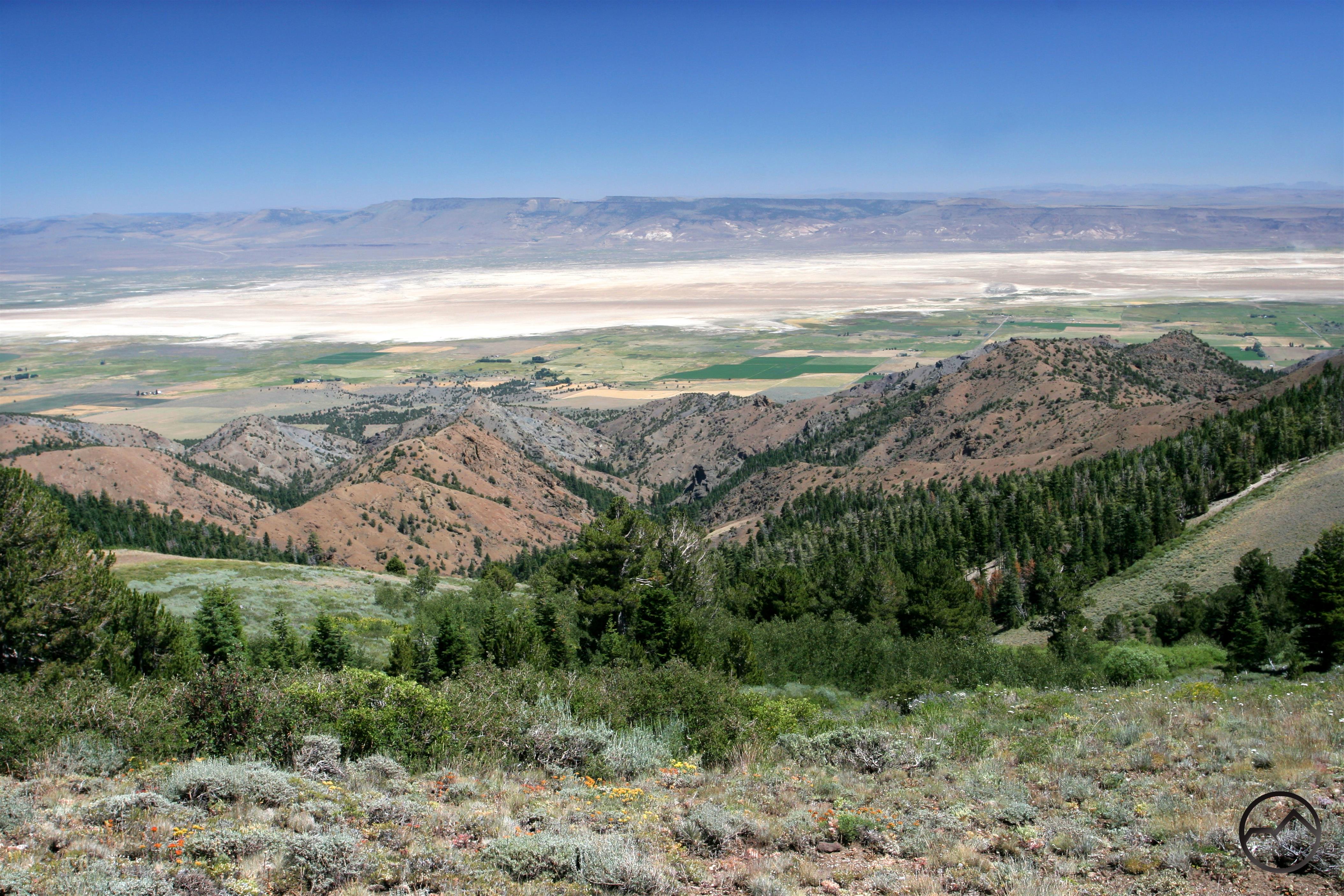
we all tend to learn mostly through personal experience, but most people are willing to have a more experienced mentor,
speed up the learning curve , and thus reduce the time and effort required to learn through trial & error.
the first thing Id suggest anyone considering an elk hunt do is get the states hunting licence requirements and read through them carefully,
once you've decided to apply for a licence and understand the states licencing procedures,
and you fully understand that in many states youll need a plan "b", "C" and "D"
simply because you may not have access or draw the area you prefer to hunt and may be required to both gain "POINTS" ,
an hunt less desirable areas during your first few years.
thus purchase of several areas topo maps and doing your research on each area is a smart route to take.
generally you'll want to hunt with either a friend or two and/or with an outfitter with a long record of happy former returning clientele.
selecting an outfitter will also require doing research and checking references carefully,
in any business theres scam artists, who are thrilled to take you money and not provide any or inferior services,
its your job to do the required research and assume , some references will be less than truthful.
try hard to get references from several previous years and fairly current references,
and ask the previous hunters for any friends,
or fellow hunters phone or e-mail contact numbers.
check with the local police and better business people and any outfitter organizations for complaints before booking a hunt.
every year you'll hear about guys that sent a healthy financial deposit, to some one,
only to find the check cashed and the people cashing it no longer return phone calls.
you'll need to get in better physical condition in almost all cases,
increased altitude will kick your butt at least temporarily ,
I live in Florida at close to sea level, I generally hunt Colorado or Wyoming,
the change in altitude takes several days for your body to adapt ,
you'll want to consult your family doctor before making the trip, and start spending at least a 1/3 hour,
on a tread mill or running stairs, as often as possible for months prior to the trip,
look up altitude sickness, on the internet, in my case every year without fail,
Ive gotten head aches and feel like crap for about 24 hours as my body adjusts to the altitude change
. It helps to drink lots of liquids like hot tea and gator aid, even when you don,t feel thirsty,
and take an aspirin a few times a day during the hunt and get to the hunt area at least two days early,
buy and use lip gloss it helps keep your lips from cracking.
get and use a decent hat with a brim that keeps sun out of your eyes,
get decent ankle support boots with an aggressive tread sole,
protect anything that will be damaged by moisture in double zip lock bags (wallet, MEDS, licences)
if your dealing with an out fitter ask questions about what they suggest and follow the advise ,
bringing a great deal of extra gear, or failing to bring the suggested gear,
is almost always going to piss off any outfitter. the guides are there to assist you, follow their advice,
but they are not going to act as a personal servant
they can,t take your shot for you, they can,t get your out of physical shape butt,
up on some ridge as fast as it might be required
, where youll get that shot of a lifetime, if your so out of shape that breathing at 7000-9000 ft of altitude is a chore,
and after two days of hunting your ready too pack it in, its not the guide or outfitters fault if you don,t score!
and yes your expected to get up early and hunt till dark if you want to be successful ,wither you have a guide or are hunting on a D.I,Y. hunt.
sleep at a few thousand feet lower altitude and take hot showers,
as it helps the body adjust before the hunt, spend the first few days before you hunt,
getting acclimated, Ive found sleeping the first night at lower altitudes like Denver before going higher helps.
yes you need to practice with your rifle shooting from field positions theres no bench rest in the field,
you should be able to use a rifle with a sling and bi-pod too consistently punch holes in a 3" orange dot,
from 100 yards from a sitting or prone position, and at 50 yards off hand.
most guys can shoot bragging size groups off a bench rest,
few of the guys I hunt with, could initially and consistently hit a coke can on a tree stump,
from 100 yards from a rapidly acquired field position,
youll need a day pack to carry personal items like a spare insulated vest, rain poncho, cell phone, skinning knife , personal med;s, licences, toilet articles etc.
if you hunt on a D.I.Y. public land hunt, a GPS, several topo maps game meat processing tools and a pack capable of hauling 60-70 lbs of meat is also advisable.
Over 5 decades there have been several factors that I have and many other people eventually do come to realize have a rather obvious effect on your success, rates.
if you were to compare the modern hunters gear and easy availability to the related tools of the trade to the early mountain men, the current advantages are remarkable.
the availability of knowledge from sources like the RMEF https://www.rmef.org/ and buying a few reference books, and videos, won,t hurt one bit!
and access to video instructive classes , and related hunting related equipment, that are currently available would astound hunters in the pre WWII era.
(1) hunting out of state on a regular consistent year to year basis is and continues to be an expensive hobby,
thats only getting more expensive, over the decades as fees and licence costs, travel related expenses have consistently increased over the years.
too get more out of the experience it helps to do your research on the area you intend to hunt,
and its going to be rather difficult to function in the higher altitudes for most people,
so take the time and effort to get into much better physical condition,
no mater what condition you think your in, the lack of oxygen at higher altitudes will effect you.
(2) the definition of insanity is doing things the same way year after year, getting the same results over and over again,
yet each time expecting to get a totally different result, simple things like keeping in reasonably consistent, month too month contact, all year long,
with the area biologist and game warden, increases your odds significantly. learn the guys name, send him or her a box of a dozen donuts or if its a girl
flowers along with a short request for your preferred hunt area tips.and related knowledge, will generally pay off in increasing your success on trips.
no one person knows everything, about hunting , your game or area, thus taking advantage of the knowledge,
and experience held by many skilled, other people gives you a huge advantage
(3) even a blind squirrel occasionally finds the occasional acorn.
(if your only seeing elk and mule deer occasionally your not taking full advantage of the knowledge available)
(4) your personal attitude, YOUR having dogged ,persistence (having masochistic tendency's)
and taking the effort year around, of your physical conditioning does mater.
(5) if your not consistently successful, year after year you might want to consider looking at your potential options,
and analyze how you might improve. wondering aimlessly is seldom productive ,
learn to use topo maps GPS, and read up on the game, what it eats where it beds etc.
(6) doing your research carefully you will have a significant advantage over joe average,
that simply drives out too the area , parks and starts randomly wondering the area.
(7) having several experienced and previously and consistently successful mentors, ups your odds of success substantially.
(8) you do have lots of current options that modern technology , has given us, that were not nearly as easily accessed in past years,
accurate topo maps,
satellite photos,
accurate and semi reasonably priced, hand held, GPS,
greatly improved optics,
more durable and accurate rifles and ammo,
far better quality thermally efficient and moisture resistant yet breathable clothing
access to local biologist and game department data banks
lazer range finders
infrared vision enhancement.
much improved camping, back packs, sleeping bags,tents and edged weapon quality.
(9) game processing and meat transport, and meat preservation knowledge and your access to it at a reasonable price is currently a huge leap upward, in tech from decades ago.
(10) most guys I have hunted with would initially have struggled a great deal to rapidly and consistently,
drop into a sitting, kneeling or standing position and rapidly place a shot into a 3" orange dot at 100 yards
learning that shooting from field positions, using a sling and a decent bi-pod and frequent practice can improve your chances,
of making an accurate shot by easily 200%-500% , familiarity with shooting accurately from field positions
does vastly improve your odds. shooting skeet improves your odds on hitting a rapidly moving close range deer or elk in the typical aspen/conifer.
(11) the combo of accurate topo maps and a GPS potentially allows you to find natural restrictions too game movement and be in areas that limit the games escape routes,
a smart hunter will use that info to locate, and be at those choke points thus using the tech advantage he has,
and consistently improving his odds of getting a good shot opportunity.
(12)
if your not seeing game where your camped within two days change hunting areas, you've got a limited time,
access to food, water, changes in weather, preferred, altitude and area hunt pressure will effect games location,
elk have zero problem moving miles every day, too find food water cover, or distance themselves from hunting pressure.
unlike whitetail deer they may not be back at your location for weeks, or more, you need to locate the elk in a vast area.
use optics and don,t limit your options be flexible.
(13) use of top quality optics, a good rifle sling and a swivel bi-pod thats tall enough to allow you to comfortably shoot from a sitting position helps a good deal.
I've used one like this for decades, it makes little sense to spend thousands of dollars and dedicate a great deal of effort getting in shape,
then stalking game if you cant rapidly and accurately make a precisely placed shot from a field position into the games vitals, from a reasonable range under most conditions
HB25CS 25C Model S -13.5-27" Swivel Bipod
(14) pick your hunting partners carefully
yes its always a P.I.T.A. if your dealing with some guy who subconsciously feels,hes been lied too!
and that if he spent one or two days wondering aimlessly around, in what he has been told too believe is "elk country"
and when not only him, but everyone else in camp has failed to even see an elk, hes ready to pack it in and go home.
once you've had experience in elk hunting you'll find that ELK can and do cover a lot of terrain, an over night snow that allows you to see,
obviously fresh tracks (even the new guys can now tell fresh from 3-5 day old) tends to help , but if your not seeing elk, change altitude and type of cover,
they will NOT tend to be wondering out in open meadows, and they do require feed, water, cover and vastly prefer low hunter pressure,
thus it generally will require learning to get into less easily reached areas and watching your air flow and odor , and learning to glass and use a topo map.
(15)
buy a few instructional tapes on elk calls, get a cow call and bull call, and learn how to use both,, practice and listen to the tapes, they may not always help you draw in a bull, but they may if properly used raise just enough doubt, in an elk as to what hes hearing move around, near him, to allow you to get just a bit closer for a shot before the elk decides the next drainage seems a healthier option.
(16)
you will need dependable transportation capable of dealing with dirt roads, deep mud, and occasionally deep snow and icy surfaces, something with 4 wheel drive and at least moderate ground clearance, is recommended,your guide may provide this but if your providing the transportation you'll need snow chains decent bumper jacks ,a shovel, a spare tire and detailed area trail maps and regulations
(17)
theres a true old 11th commandment
"thou shall never let those with less experience, skills, & persistence of will,
, limit what you can attempt and ultimately accomplish!"
"IT can,t be done", its the mantra of LOSERS
(18)
larger areas of private land in elk territory, tend to have far lower hunter pressure than adjacent public land, obviously knowing exact property boundary's (you need accurate current maps and GPS, )and if you can gaining legal access to private land has some big advantages , but can be expensive in some areas.

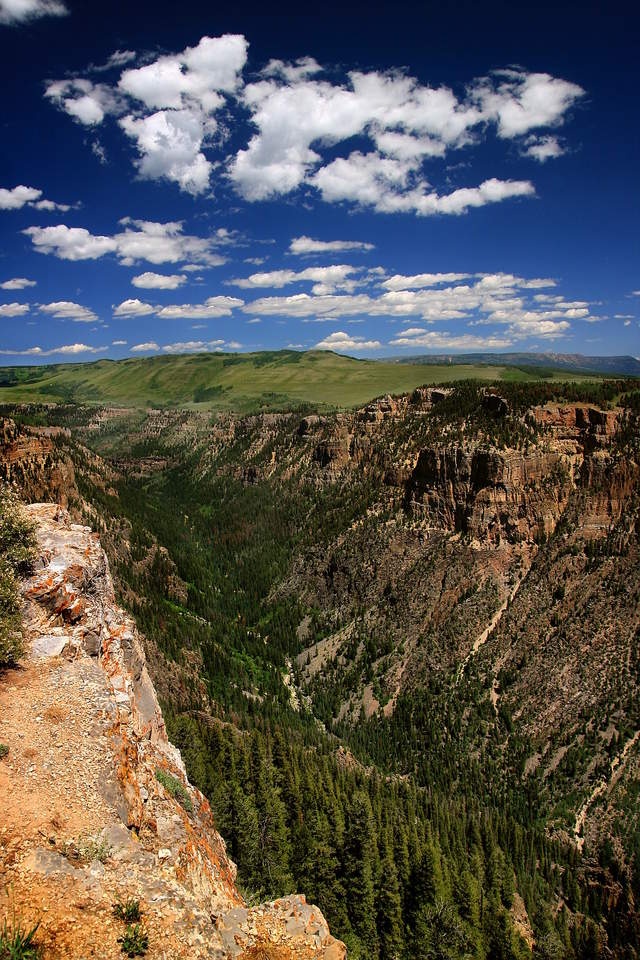
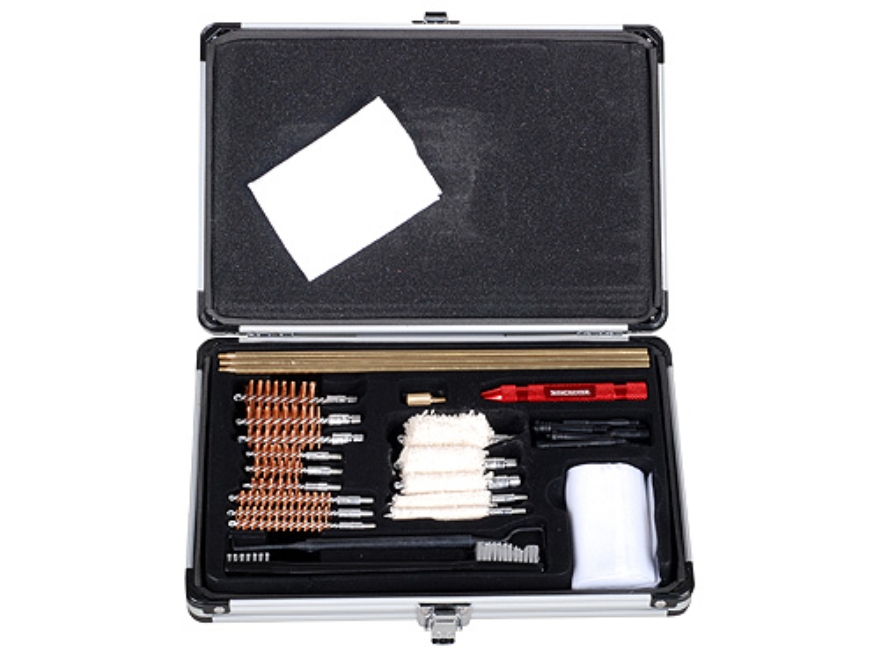
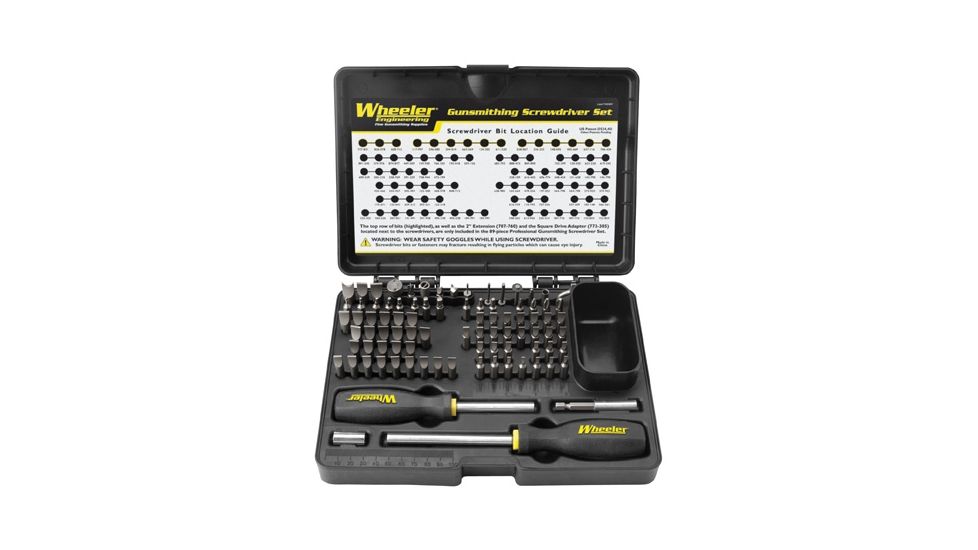
anytime you travel you should have a bare minimal rifle cleaning and basic screw driver/allen key and bore cleaning tool kit
I can,t even remember all the many multiple times having a rifle cleaning kit and a set of screw drivers available to tighten scope mounts or bedding screws,
or having the tools to adjust or tighten a trigger adjustment screw or sling mounts or some other minor problem made a difference in a hunt.
theres some good universal tips in this thread also
https://www.huntingnet.com/forum/whitetail-deer-hunting/418200-florida-whitetail-experience.html
http://www.rmef.org/TheHunt/During/Glassing.aspx
http://soleadventure.com/2013/07/optics-for-western-hunting-binoculars-and-spotting-scopes/
http://garage.grumpysperformance.com/index.php?threads/hunting-binoculars.14300/#post-78145
https://www.gohunt.com/read/optics-what-you-need-for-success-in-the-west
https://www.outdoorlife.com/blogs/live-hunt/2011/07/scouting-tips-how-find-elk-honey-hole-summer
http://www.huntaddicts.com/hunting-advice-tips-tactics/hunting-with-spotting-scopes/
Last edited: A moment ago
theres some good universal tips in this thread also
https://www.huntingnet.com/forum/whitetail-deer-hunting/418200-florida-whitetail-experience.html
much of the area looks similar too these pictures I found posted elseware
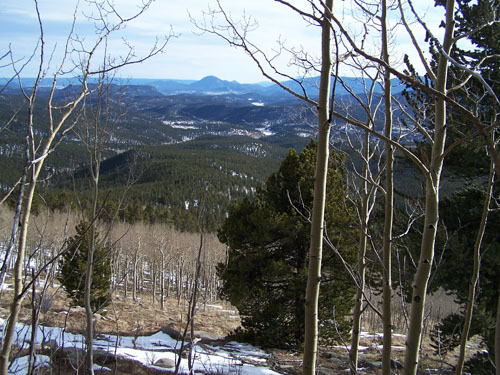
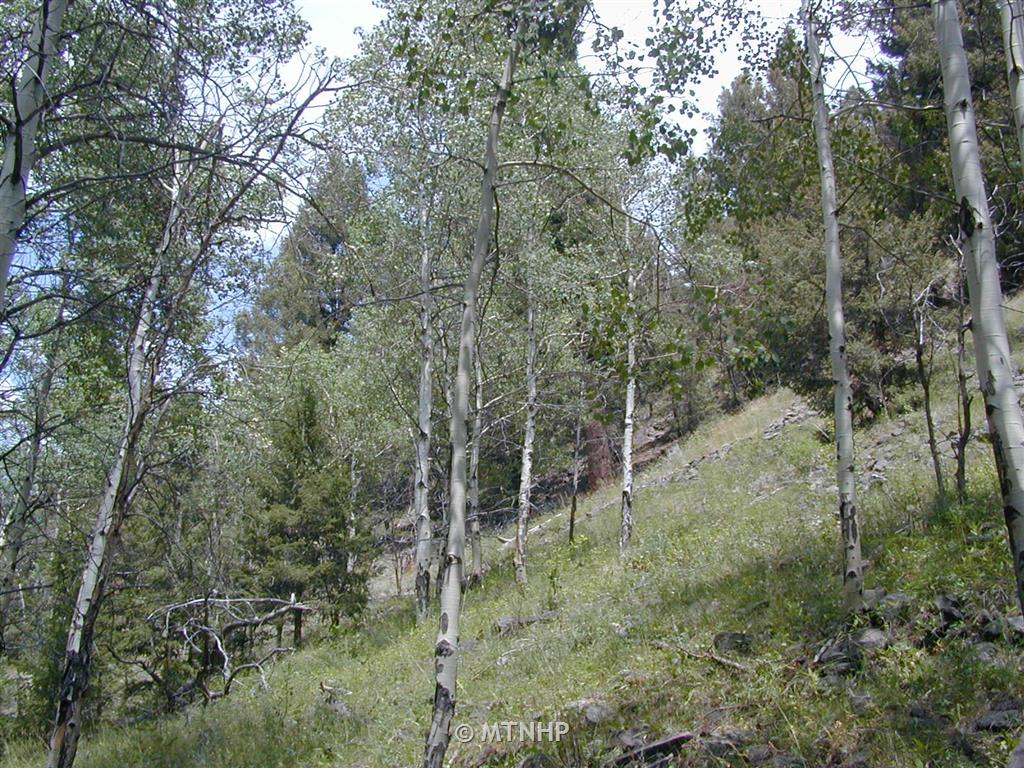
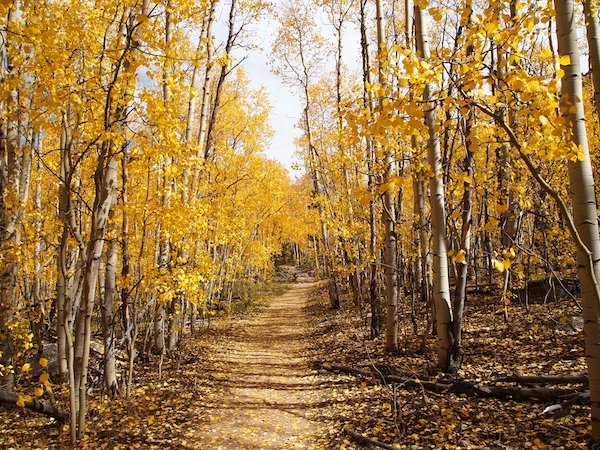
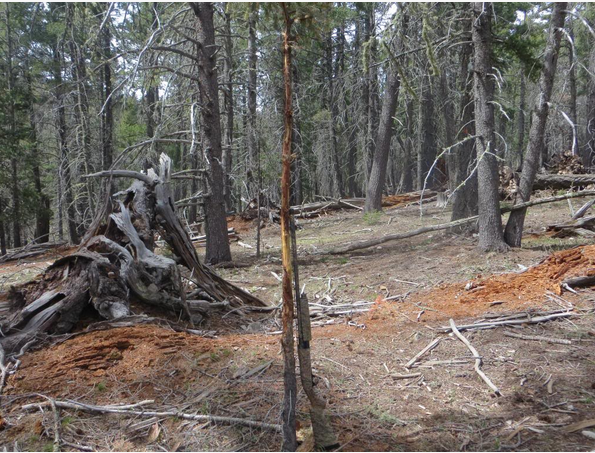
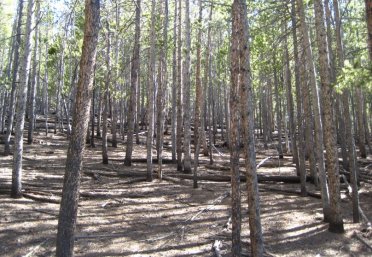
just a side note
when I first got into hunting elk , I was about 18 years old, and that was back in about 1968, and I was very lucky,
I had several skilled mentors with decades of experience ,that made the trip out to Colorado every year,
these guys were all in their 40s & -50s and 60s at that time ,they had all been hunting for decades,
all but one of those "old geezers' were using a 760 rem slide action or bolt action 30/06 rifles,
(the sporters based on the 1917 Endfield and mod 70 win were revered,) most of them used 180 grain or 220 grain round nose bullets,
these geezers stressed, the importance of learning to having the skill to drop into a sitting position with proper use of a rifle sling and being consistently able to place shots on a 3" orange dot at 100 yards,
they also explained trajectory, and strongly suggested sighting into hit 3.5" high at 100 yards, so range estimation was not extremely critical.
they also suggested learning to shoot skeet, because hunting in the thick timber might require shooting off-hand at closer ranges.
as that was what too a man they had found to be very effective, so on their advise I purchased and used a 760 rem on my first three hunts.
( could not locate a 1917 Endfield)
those were exciting times and these guys did a great deal to get me up too speed on learning where to look for elk,
how to find them and how to dress out and care for and transport the meat once the deer and elk we shot, were down.
now I read every hunting article and magazine, I could find at the time ,
if your my age you might remember the 7mm mag and 300 win mag both came out in about 1963,all the magazines were full of articles promoting the
pre 1964 winchester bolt guns and lamenting the crappy new Winchesters, the fairly new remington 700 rifles were heavily advertised.
but at about the same time frame the 340 weatherby in the mark V rifle was being heavily promoted
being young I read everything I could find and became convinced, I really needed to spend about 2 months pay and buy a weatherby 340 mag.
It took me over a year to save up and get one.
now looking back, and thinking about the results, the 340 wby worked and continues to work exceptionally well, but every deer or elk I shot,
with my 30/06 was just as dead, and in either case a single well placed shot was lethal.
the difference was that if I hit an elk with a 30/06 , well mostly they looked like they just were startled and ran, a few steps then fell,
hit in a similar location with the 340,wby few ran, most fell or stood as if dazed then slowly collapsed, few ran, while both were lethal, there was an obvious difference in the initial , reaction to a well placed shot.
over the following decades while watching many dozens of guys kill deer and elk,
it became obvious to me that the rifle and caliber ,the guy carried was far less important that the skill and experience of the guy using it.
especially after watching the older guys, and newer members of the group, use everything from a 257 roberts and 6.5mm swedish mauser to a 45/70 and 458 win,
and even rather less popular calibers, for elk and mule deer, like a 44 mag marlin lever action, and 35 rem.
all worked if the guy using it was a good shot!
we have all spent time in rather senseless debates, about what rifle caliber or bullet weight is better, or what rifle design or action type is best.
we all are convinced our choices are the best ones, and everyone else is making a mistake,
after watching guys in our hunt club over decades, its all too obvious too me at least that its not the rifle or cartridge selected as much as the,
skill and experience of the guy who is using it that maters.
I've watched one guys dad who is even older than I am convincingly kill several elk with a 257 Roberts with a single shot each time.
I've come to really like using a 340 wby, 375 H&H, and 450 marlin, I can,t remember needing a second shot in 4 decades,
most of the guys think I'm a bit odd, and most use as they always have, a 308 win, 30/06 or 35 whelen.
a few guys like the 358 win, those are by far the more popular choices.....
Originally I was sure my rifle choices made a huge improvement, and for me it instills 100% confidence.
but it does not seem to make a bit of difference... what does make a difference is attitude and persistence!
If anyone really paid any real attention, its been obvious, for decades,
its the guys who are willing to get their butts up and out of camp, and spend every available minute of daylight out in the field,
the guys who spend off season weekends at the range,
and guys that buy and bring topo maps and aerial photos of the areas we hunt,to camp,
the guys who are willing to keep in decent physical condition,rather than try to get back in shape the week before,
we take the trip out west, that are consistently more successful.
Im certainly not suggesting a 30/30 and a 340 wby have similar power or range,
but in the hands of a skilled hunter, who knows his rifles limitations, and selected it,
and is willing to work with-in that equipment's limitations,
either choice, works well.
read these related threads
http://garage.grumpysperformance.co...hat-are-you-looking-for-in-an-elk-rifle.2368/
http://www.shootingtimes.com/ammo/ammunition_st_exforelk_200908/
http://garage.grumpysperformance.co...hooting-from-field-positions.9380/#post-55569
http://garage.grumpysperformance.co...id-a-concern-when-selecting-your-rifle.12782/
http://garage.grumpysperformance.co...-340-wheatherby-and-375-h-h.12979/#post-67520
http://garage.grumpysperformance.co...ting-a-decent-hunting-scope.13506/#post-69949
http://garage.grumpysperformance.co...t-mass-and-caliber-how-much-is-required.4607/
http://garage.grumpysperformance.com/index.php?threads/rifle-choice-if-starting-over.6505/
http://garage.grumpysperformance.com/index.php?threads/whats-a-good-light-weight-elk-rifle.3738/
http://garage.grumpysperformance.co...ange-calibers-for-elk-are-not-mandatory.1275/
Last edited:


